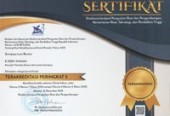Cultural Locality and Bureaucracy on the Sukabumi City Police Command
DOI:
https://doi.org/10.28946/slrev.Vol4.Iss2.452.pp23-40Keywords:
Bureaucracy Types, Cultural Locality, The Indonesian National Police.Abstract
Rational bureaucratic models in various organizational contexts can no longer be implemented as originally designed because of the interaction of cultural locality, including in city-level police organizations. Services to the community in the District of Sukabumi cannot be implementedappropriately. It is because there are three problems, namely the absence of detailed and transparent rules, the lack of material and budget support, and the functional relationship between the police and the community, which is influenced by the dominant local culture. This research investigates the variety of features of cultural locality in the bureaucracy of Sukabumi ResortPolice through a qualitative approach.The source of research data is determined purposively and snowball based on an emic approach to get social phenomena that occur. Data mining is carried out in the form of complete participant observation, interviews, and document studies. The results of the research revealed that the bureaucracy in resort police is characterized by a unique hierarchical chain and unity of command through and carried out by superiors, specialization into functions, regulations and organizational policies, standard procedures for each job, career coaching structure, and impersonal relationships. In addition, the cultural context and locality of the Sukabumi community, which is thick with Sundanese culture, become a social convention which is manifested in activities, actions, and ways of thinking. These manifestations are based on friendship, mutual assistance and respect, respect for parents, deliberation in solving social problems that refer to the culture of diriungkeun by using religious figures, preachers, and ajengan as primordial charismatic figures.Cultural context and locality are believed to have influenced the bureaucratic style so that the rational bureaucracy cannot be fully implemented but must adopt local culture.Downloads
References
Albrow, Martin, and Martin Albrow. “Seven Modern Concepts of Bureaucracy.†In Bureaucracy, 1970. https://doi.org/10.1007/978-1-349-00916-9_6.
Aron, R. As Etapas Do Pensamento Sociológico [The Stages of Sociological Thinking]. Lisboa: Publicações Dom Quixote, 1994.
Bruner, E.M. “The Expression of Ethnicity in Indonesia.†In Urban Ethnicity, edited by Abner Cohen, 251–88. London: Tavistock, 1974.
David Osborne, and Peter Plastrik. Banishing Bureaucracy: The Five Strategies for Reinventing Governmen. New York: Plum Book, 1998.
Djamin, Awaloedin. Administrasi Kepolisian RI: Kenyataan Dan Harapan. Bandung: Sanyata Sumanasa Wira, 1995.
Dwilaksana, Chrysnanda. “Perpolisian Komuniti (Community Policing) Dalam Menciptakan Keamanan Dan Ketertiban.†In Bunga Rampai Ilmu Kepolisian Indonesia, edited by Parsudi Suparlan. Jakarta: Yayasan Pengembangan Kajian Ilmu Kepolisian, 2004.
Godoi, A., Silva, L. F., and O. O. Cardoso. “Ensaio Teórico Sobre a Burocracia Em Weber, o Conflito Da Agência e a Governança Corporativa: Uma Reflexão Sobre a Burocracia Profissionalizante [Theoretical Essay on Bureaucracy in Weber, the Agency Conflict and Corporate Governance: A Reflection on Prof.†Revista de Administração de Roraima-UFRR 7, no. 2 (2017): 426–47.
Guangzhen, Wu. “Predicting Three Dimensions of Police Officer Stress: Does Rural or Urban Setting Matter?†Edited by Wen Ming. Policing: An International Journal, January 1, 2019. https://doi.org/10.1108/PIJPSM-03-2019-0042.
Idris, Muhammad, Muhammad Ramli, Andi Agustang, and Andi Lima Kesuma. “Bureaucracy Ethics Based in Public Service Local Wisdom in Gowa.†Mediterranean Journal of Social Sciences. MCSER Publishing, Rome-Italy 6, no. 6 (2015): 419–24.
III, Eugene A. Paoline, and Jacinta M. Gau. “Police Occupational Culture: Testing the Monolithic Model.†Justice Quarterly 35, no. 4 (2017): 670–98.
Janowitz, Morris. The Military in the Political Development of New Nations. Chicago: The University of Chicago Press, 1995.
Lamin, Sylvester Amara, and Consoler Teboh. “Police Social Work and Community Policing.†Edited by John Martyn Chamberlain. Cogent Social Sciences 2, no. 1 (December 31, 2016): 1212636. https://doi.org/10.1080/23311886.2016.1212636.
Lauchsa, Mark, Robyn Keastb, and Nina Yousefpourb. “Corrupt Police Networks: Uncovering Hidden Relationship Patterns, Functions and Roles.†Policing & Society 21, no. 1 (2011): 110–27.
Mintzberg, H. “Structure in Fives: Designing Effective Organizations.†In Englewood Cliffs, 348–50. New Jersey: Prentice-Hall, 1983.
Nitibaskara, Ronny Rahman. Tegakkan Hukum Gunakan Hukum. Jakarta: PT. Kompas Media Nusantara, 2006.
Oakes, Guy, and Arthur J Vidich. “Gerth, Mills, and Shils: The Origins of ‘From Max Weber.’†International Journal of Politics, Culture, and Society 12, no. 3 (January 15, 1999): 399–433. http://www.jstor.org/stable/20019978.
Pettinger, and Richard. Learning Organization. New York: Oxford: Capstone Published, 2002.
Pinchot, Elizabettsh, and Gifford. The End of Bureaucracy & The Rise of Intelligent Organization. San Fransi. Berret-Koehler Publisher, 1993.
Pollitt, C. “Bureaucracies Remember, Post-Bureaucratic Organizations Forget?†Public Administration 87, no. 2 (2008). https://doi.org/10.1111/j.1467-9299.2008.01738.x. .
Reiner, Robert. “The Politics of Police.†The Journal of Criminal Law and Criminology (1973-), January 1, 2012, 115–30. https://doi.org/10.1093/he/9780199283392.001.0001.
Rian Andhika, Lesmana. “Pathology Bureaucracy: Reality of the Indonesian Bureaucracy and Prevention.†Jurnal Bina Praja 9, no. 1 (May 31, 2017): 101–14. https://doi.org/10.21787/jbp.09.2017.101-114.
Robbins, Stephen P. Organizations Theory: Structure Designs and Applications. 3rd ed. New Jersey: Prentice-Hall Inc, 1990.
Rosyidi, Unifah. “Reformasi Administrasi Sub Nasional: Analisis Reformasi Pemerintahan Kecamatan Kota Bogor.†Disertasi, 2007.
Serpa, Sandro, and Carlos Miguel Ferreira. “The Concept of Bureaucracy by Max Weber.†International Journal of Social Science Studies 7, no. 12 (2019): 14. https://doi.org/10.11114/ijsss.v7i2.3979.
Setiono, Budi. Jaring Birokrasi: Tujuan Dari Aspek Politik Dan Administrasi. Bekasi: PT. Gugus Press, 2002.
Siagian, Sondang P. Patologi Birokrasi: Analisis, Identifikasi, Dan Terapinya. Jakarta: Ghalia Indonesia, 1994.
Suparlan, Parsudi. Bunga Rampai Ilmu Kepolisian Indonesia. Jakarta: Yayasan Pengembangan Kajian Ilmu Kepolisian, 2004.
———. “Polisi Indonesia Dalam Rangka Otonomi Daerah.†Makalah Seminar Hukum Nasional VIII. BPHN. Jakarta, 1999.
Weber, Max. Economy and Society, Ed. Guenther Roth and Claus Wittich. California: Berkeley: University of California Press, 1987.
















